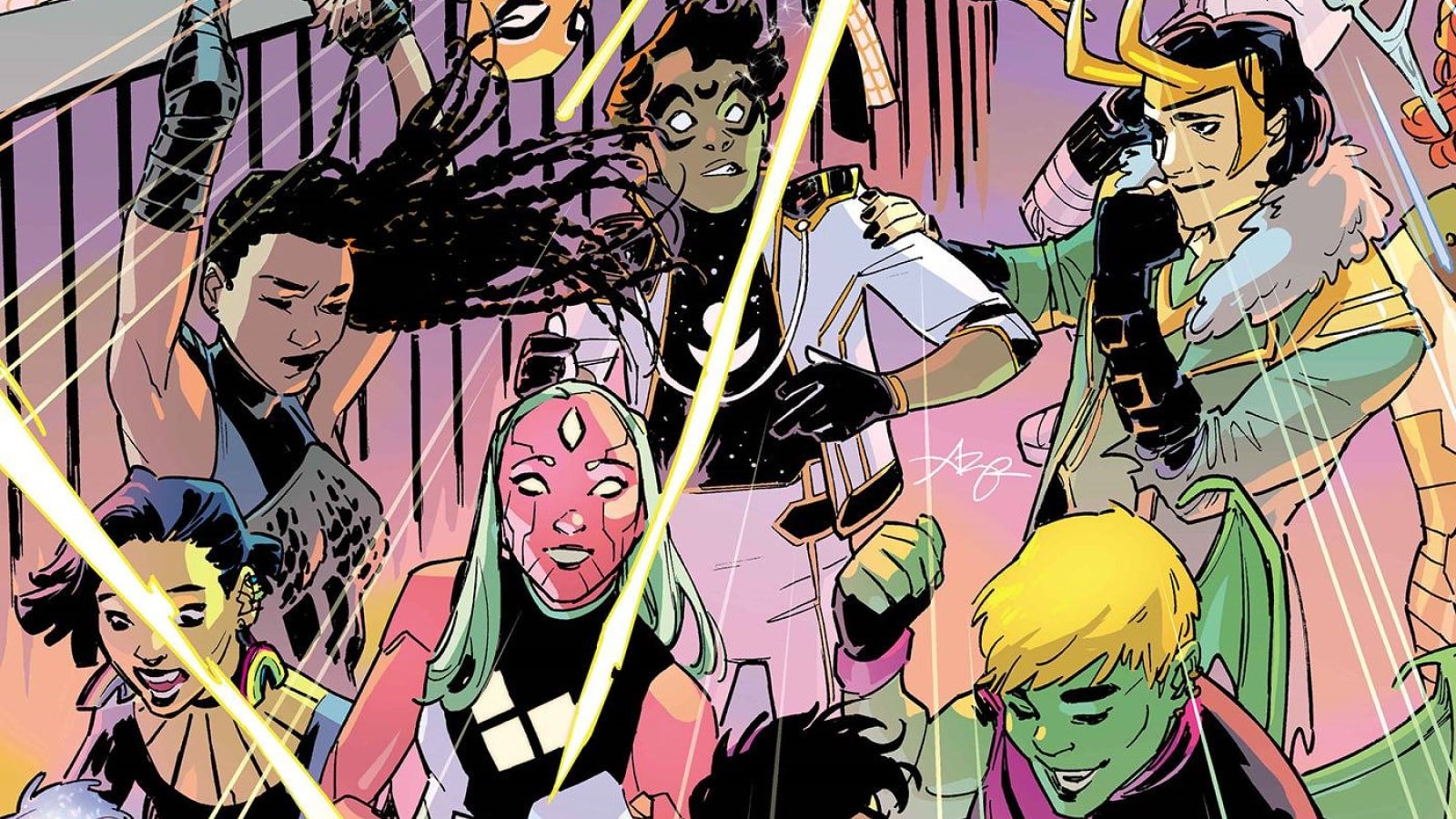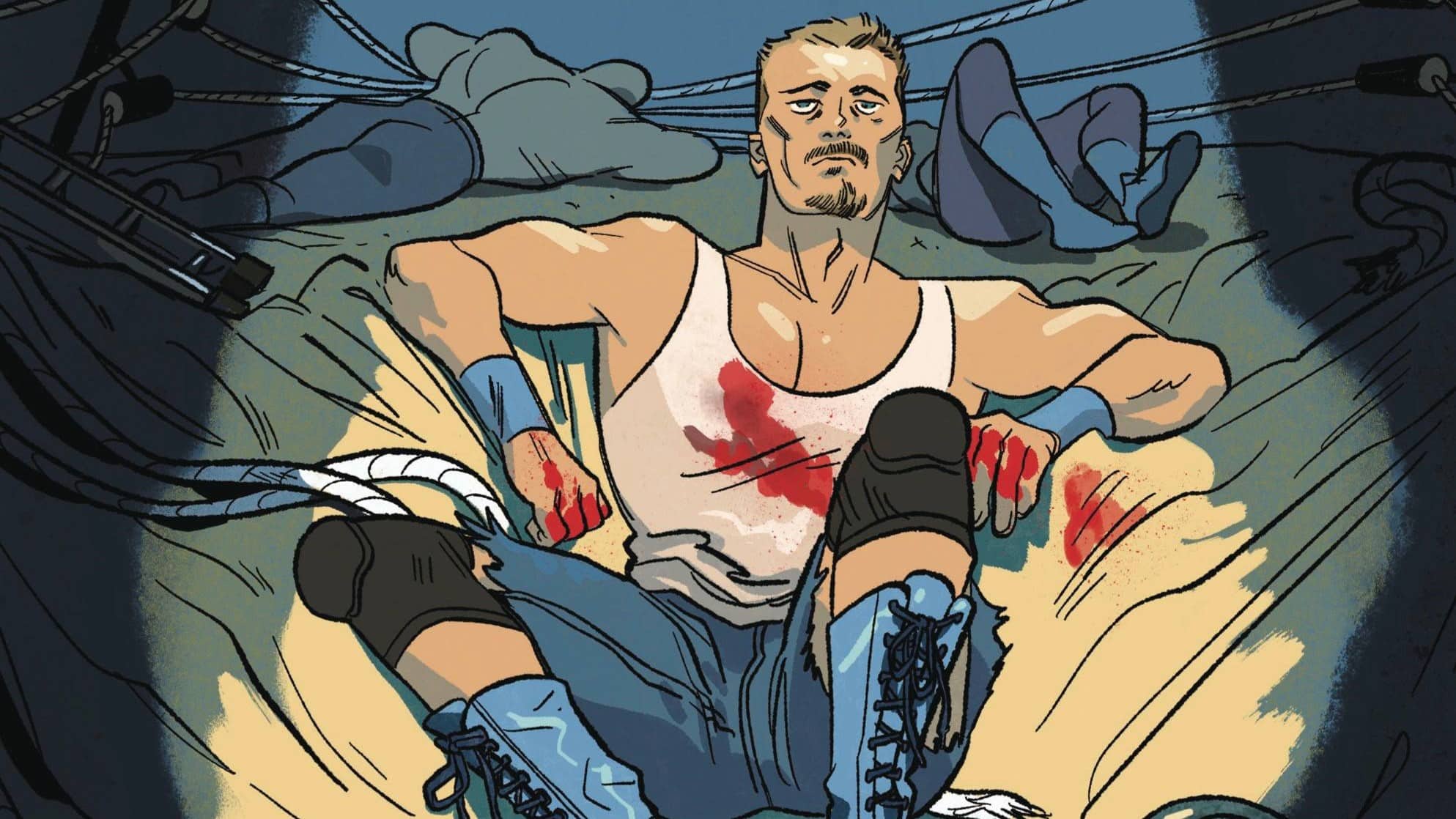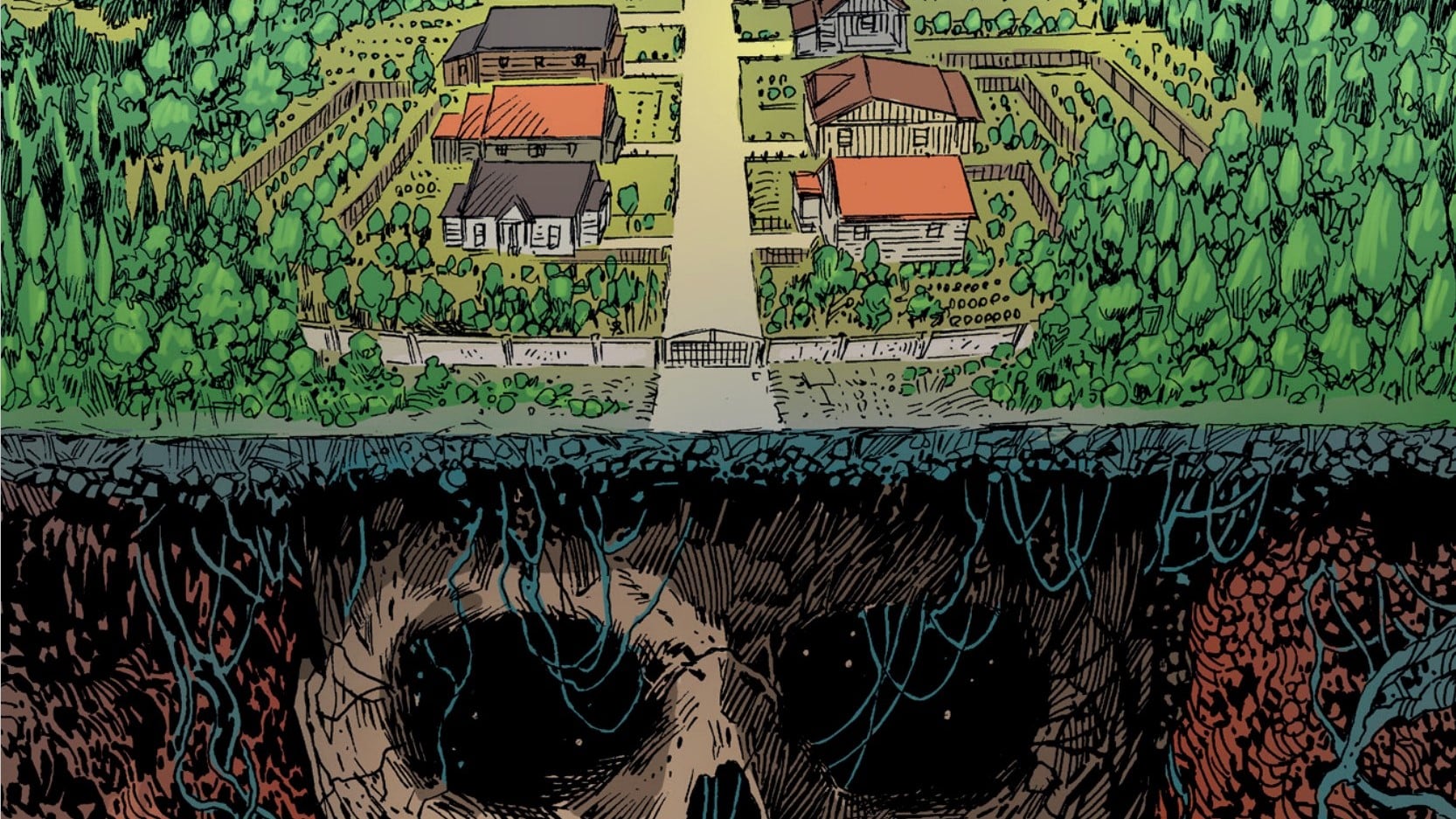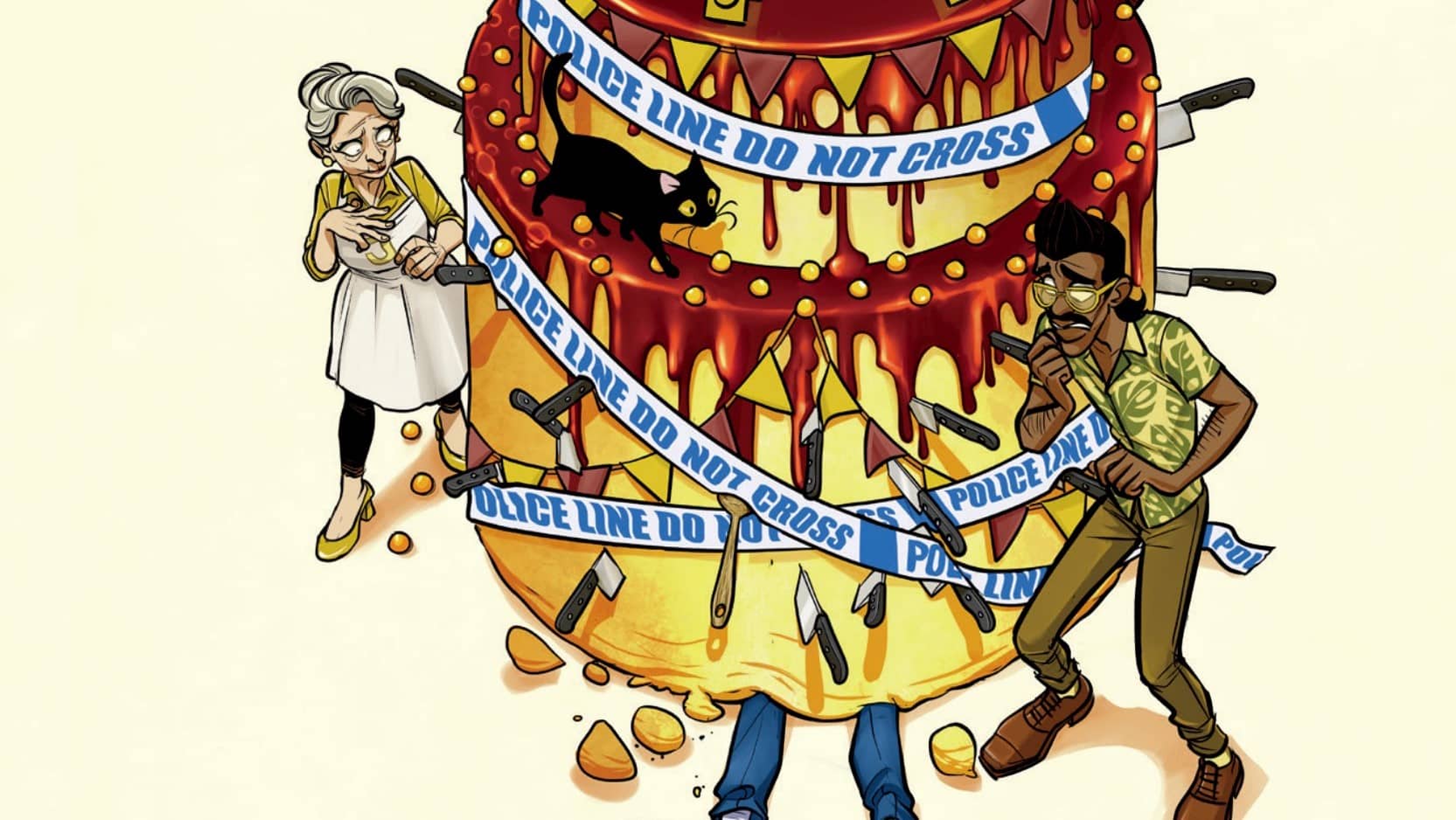The Hulk and his allies fight kaiju sized monsters in the city of Phoenix Arizona. Said monsters were sent by Roxxon CEO Dario Agger, and clearly he has a deeper, more sinister scheme in this tale by Al Ewing, Joe Bennett, and company.
Zach Rabiroff: Welcome back to another installment of Time Immortal, the internet’s premier outlet for Hulk-themed Biblical commentary and jokes based on 50-year-old Roy Thomas comics! When last we left our titular antihero, he was locked in battle against a horde of corporate-manufactured monsters in downtown Phoenix, while Dario Agger of Roxxon waited to collect the spoils. This issue picks up right in the middle of the horrific, slimey climax of that battle — so let’s waste no time, and join our monster mash already in progress.
Robert Secundus: Hulk did the Mash, Hulk did the Monster Mash/ the Monster Mash, It was a Capitalist Bash/ Hulk did the Mash, Ric blew up in a flash etc etc
Complex Messiahs
ZR: Our epigraph this issue comes from the Gospel of Matthew (or as I like to think of it, the Gospel of Mark: Extended Edition):
Watch therefore: for ye know not what hour your lord doth come.
Matthew 24:42
Robert, you’re our resident expert on New Testament exegesis. At the risk of subjecting to you the demonstrable inferiority of the King James Translation [Ed. Note: It’s good for comics worthy quotes], what are your thoughts on this verse with regard to this issue?
RS: It’s interesting, because Matthew 24 as a whole exemplifies a weird tension you see in Left Behind-y corners of Christianity that claim to adhere to scripture very literally. The disciples ask Jesus, “what shall be the sign of thy coming, and of the end of the world?” (Mt. 24: 3) and Jesus responds with a list of signs. Apocalyptically-minded Christians look to this catalogue, The Book of Revelations, and a few other passages in order to prove that we are living near The End. But at the same time this verse should indicate that such activity is folly, that even if the signs of The End are out there, no one can move accurately from signifier to signified. The final point of the passage is that you should treat every hour as if it were the last. What ends up happening, in my experience, is that this verse gets muddled in two ways. The first: BE PREPARED– for the signs make evident that The Lord is returning soon, but we can’t specify which particular hour in the near future this return will be. The second: that extremely general certainty-of-apocalypse thinking combined with extreme-uncertainty-of-particulars results in a worry that you might think Christ has returned, but His enemy has taken on that appearance. Matthew 24: 24 (which we’ll discuss shortly) becomes extremely important.
ZR: The thing about religious texts, of course, is that their interpretation (or misinterpretation) is often as important as their original intent — and that’s particularly true in this story, where the apocalypse we see is one that’s being manufactured by corporate decree. One thing that strikes me as significant is that Matthew 24 begins with a passage about the destruction of the Jerusalem temple — a vision of war, chaos, and deception that will precede the apocalypse. (That’s the Biblical end of days, mind you. If you were hoping to read about Marvel Comics’ Apocalypse, please redirect your browser to the latest instalment of Excalibuddies right here on Xavierfiles.com. Who says this isn’t the Unpaid Comic Critic Age of Cross-Promotion?) [Ed. Note: We will always stick up for our pals on the X-side of things].
RS: I don’t believe this was an intentional parallel, but the connection to the destruction of the temple is interesting given that this arc focuses on the destruction of the physical building in which the pro-Hulk paper is housed.
ZR: It’s an interesting thought — and even if the idea of the press as the “temple” of the modern age is probably a little more right-wing-conspiratorial than the creators of this book actually intended, the idea of mass media as an almost religious force is certainly something that this arc is grappling with. Ultimately, though, this particular verse from Matthew [Ed. Note: 24:24, specifically) is really about rebirth, and the arrival of a Messiah that will announce the coming of a kingdom of God on earth. It points to something we touched on last time: the Hulk’s savagery and destruction as a gateway to some greater rebirth. But as Matthew warns us, “false messiahs and false prophets will appear and perform great signs and wonders to deceive.” And there are more than a few pretenders popping their heads out of the rubble of Phoenix in this issue, aren’t there?
RS: As far as possible false messiahs go, we’ve got, first of all, the Hulk himself, very much an “abomination of desolation” (Mt 24: 15) who has been at times compared to the antichrist, at times to Satan (not the Devil, aka God’s Hulk, but the Accuser of Job, who tests and destroys in the name of righteousness), and who we can very easily imagine saying “Think not that I am come to send peace on earth: I came not to send peace, but a sword,” (Mt 10:34). But we’ve also got Rick Jones appearing in a grotesquely Resurrected Christlike way [Ed. Note: Looking upsettingly like Ricky Gervais in his crucifixion picture] when he explodes a dragon head and floats through its viscera.
ZR: Rick Jones’s role in this series is fascinating to me precisely because of the way it plays against type. For most of his history as a character (and specifically as member of the Hulk’s supporting cast), Jones has been the most human of Marvel heroes and quasi-heroes. No matter how many heroes to whom he played sidekick, or Skrull invasions he thwarted through the power of Golden Age superheroes popping out of his forehead (it’s true, kids! Look it up!), he was the grounded, reliable conscience to the Hulk’s rampaging fury; the source of calm and humanity that reminded Banner who he was underneath his brutal exterior. Yet Jones’s messianism in this series is alarming because it seems so decidedly unhuman. In this issue, we find him cracking a thoroughly ill-timed joke, only to be perplexed when it’s pointed out to him because, “I put on this act…I don’t always know what’s appropriate.” If a Messiah is expected to be equally god and man, Rick might be having a little trouble with the second half of the equation these days [Ed. Note: Poor guy can’t turn off the goofs].
RS: Goodness, that line was equally heartbreaking and disturbing.
Now for our final false prophet:
Xemnu Kid on the Block
RS: Zach, I know absolutely nothing about Xenmu. But you’ve read every Earth 616 continuity comic from, what, 1939-2015 [Ed. Note: You might think Rob is kidding but he really has done this]? Could you give us a crash course in The First Hulk?
ZR: Gather round, children, for I come to share the Good News of our prophet, the Titan called Xemnu. Xemnu is a yeti. But not just a yeti. An alien yeti. But not just an alien yeti. An alien yeti who can hypnotize people into doing his will. Also, he can change his size whenever he chooses. Also, he was a cyborg for a while, but he may have gotten better. Oh, and Xemnu is the Hulk. Or, rather, he was the original Hulk, since that was the name he was called in his first appearance way back in Journey Into Mystery #62, a pre-Marvel Age monster tale about an alien who crashed on earth, attempted to mind control humanity into building him a new spaceship, and was ultimately cast adrift in space. That name was retconned into Xemnu the Titan when the story was later reprinted in a post-Incredible Hulk world, but it’s probably because of the original nomenclature that Roy Thomas decided to bring him back in 1972’s Marvel Feature #3 — a truly bonkers tale that has defined the furball ever since.
In that early Defenders story, Xemnu, having returned to Earth, decides to get himself on TV as a successful children’s entertainer: all part of an elaborate plan to hypnotize young Earthlings into traveling to his depopulated home planet and becoming its new inhabitants. Despite wild multimedia success (there are a line of high-selling Xemnu action dolls), Xemnu’s plan is thwarted by the efforts of the Defenders, including the new Hulk, who henceforth became the Titan’s arch-nemesis.
So from this story, we can glean three key facts about our dear Xemnu. First, he has experience in corporate branding and successful media exposure. Second, he has no qualms about bringing humanity into blissful obedience to his will and guidance. And third, every story he touches immediately becomes unutterably insane. That makes him a perfect match for this series, and specifically for a story arc about the ways that corporations can spin religious iconography through media control. Also — and this really can’t be overstated — he is just the best. Better than MODOK, even.
RS: Zach, that is… that is Buck. Wild. I don’t think I can add anything to his history, so let’s turn to his appearance here. Throughout this series, I have been struck over and over by Bennett’s absolutely sublime art, and I mean that fairly strictly, as something which causes both horror and delight. I think this final splash page epitomizes the balance of the beautiful and the disgusting that has been on display throughout this series, as a golden vision surrounded by parasitic worms. But what really perfects this image are Mounts’ colors; the resulting image is extremely reminiscent of Orthodox iconography, and, specifically, the image of Christ Pantocrater, an image which is intended to emphasize Christ’s omnipotence.
ZR: It’s an image fantastic in its breathtaking oddity, with the captured body parts of eldritch monsters surrounding Xemnu in their own tiny haloes, like saints in a Byzantine mosaic. It’s a perfect representation of monstrousness warped into the form of beauty, or a fuzzy alien standing in the place of a savior. (Fun bonus fact: the term pantokrator is a Greek translation of El Shaddai, one of the Hebrew names for God. Among other etymologies proposed for that term, El Shaddai might possibly be an epithet meaning “God the Destroyer” — a description that could serve just as well for the savage Hulk as it could for Xemnu and his masters at Roxxon.)
The Punching
RS: Do we want to take a second and just revel in the glorious Kaiju violence? From Hulk tearing through the Godzilla 1985-ass parasites to Titania VS Lava, the whole fight is just a delight.
ZR: As much as my opinions have run hot and cold on Bennett’s art in this series, this is exactly the sort of issue where it absolutely stuns. There’s something almost tangibly gruesome in the battle scenes throughout this issue, in which limbs are torn violently from monsters plucked (strategically, as far as Dario Agger is concerned) from the most basic nightmare imagery of mankind. And I have to give just as much credit to the great Paul Mounts on colors, who creates an eerie contrast between the muted tones of the dark city, and the technicolor gamma glow of the Hulk and his monster foes. I said last time that for all of its religious imagery and philosophical musings, this series is a horror story at its heart, and this is the sort of issue that reminds us of that with every hideously gorgeous panel.
RS: I’d also like to point out the work the layouts are doing. Throughout this arc, each issue has had a steady and really immediate sense of pace, and I think that’s in large part due to the continued use of a 3-row layout. But here, at just a couple of the most intense moments, the fight seems to shake the very layout itself, as panels jumble down the page. It’s not a novel trick by any means, but it works extremely well here.
ZR: Plotwise, I have to admit that this was our second lighter issue in a row — there simply wasn’t much happening here beyond the obvious happenings of a long, brutal fight. But every comic needs an action beat once in a while, and (as our nattering here has probably proved) there were enough thoughtful allusions and nods to comic book history to make this more than just another 20 pages of gamma-fueled punching. Which, as far as I’m concerned, is what continues to make this a series worth reading: even when it speaks slowly, it still has something interesting to say.
RS: I’m just waiting for the return of Metatron, Zach, so we can go full apocrypha and angelology. Will he return next issue? Next arc?? One thing we know by now, thirty issues in—we can’t ever predict what will come next, we must always be prepared, as we would for thieves in a darkened night.
Marvelous Musings
- Gamma Flight appears to favor Nuke Cola as their brand of choice. I would have pegged them for RC-drinkers myself.
- Xemnu once got entangled in a lawsuit with the Impossible Man and Thunderbolt Ross over legal ownership of the Hulk trademark thanks to his earlier use of the name. It was in an issue of Jeff Parker’s Hulk, and we should all agree never to speak of it on pain of exile.
- “An angry drag queen is scarier than a minotaur.” How’s that for a Kids in the Hall reference, Al?
- Interesting, in light of last issue’s discussion of psychology and the daylight, that the Hulk we get here is classic Savage Hulk
- The parasites in the monsters is very Cloverfield
- Also Trojan Horse?
Zach Rabiroff works daily at a charity, and is also a freelance writer and editor. He reads a lot of comics.Robert Secundus is an amateur-angelologist-for-hire.







